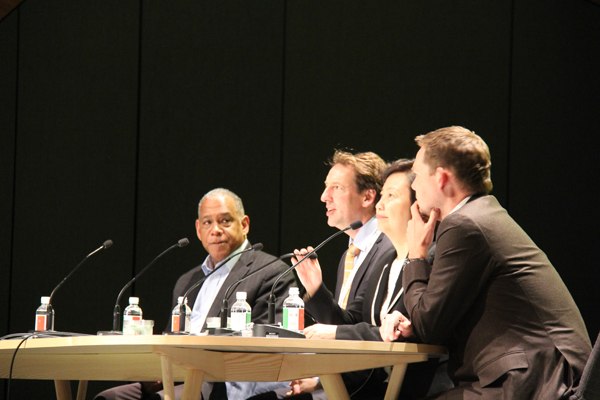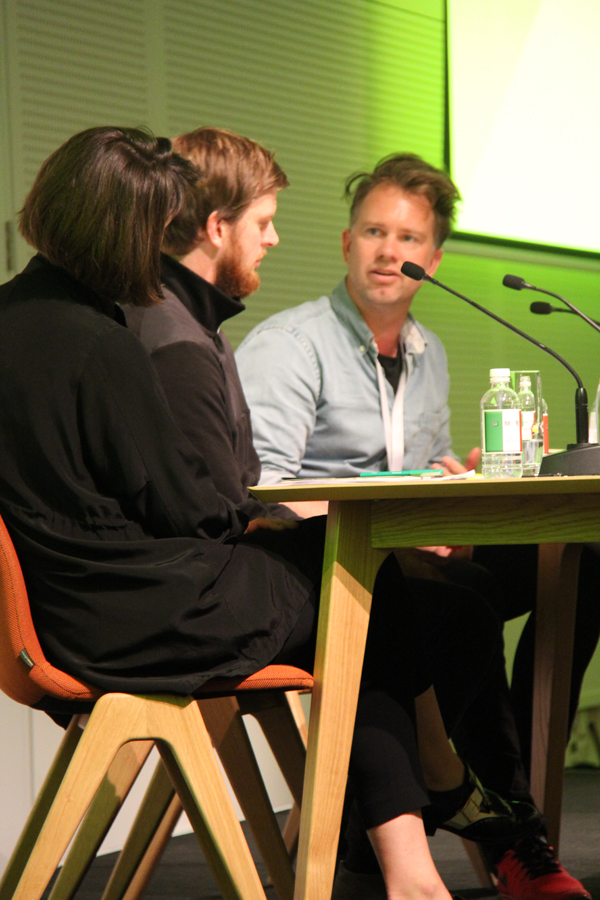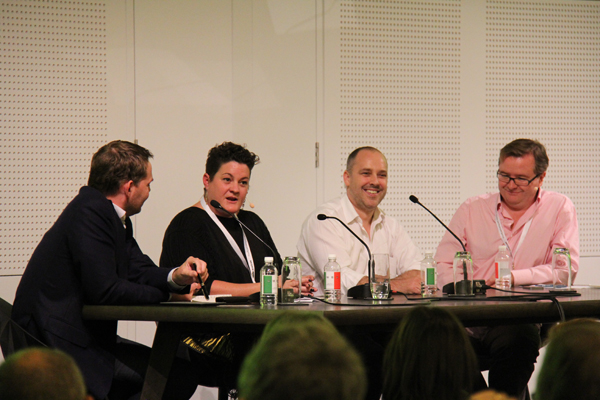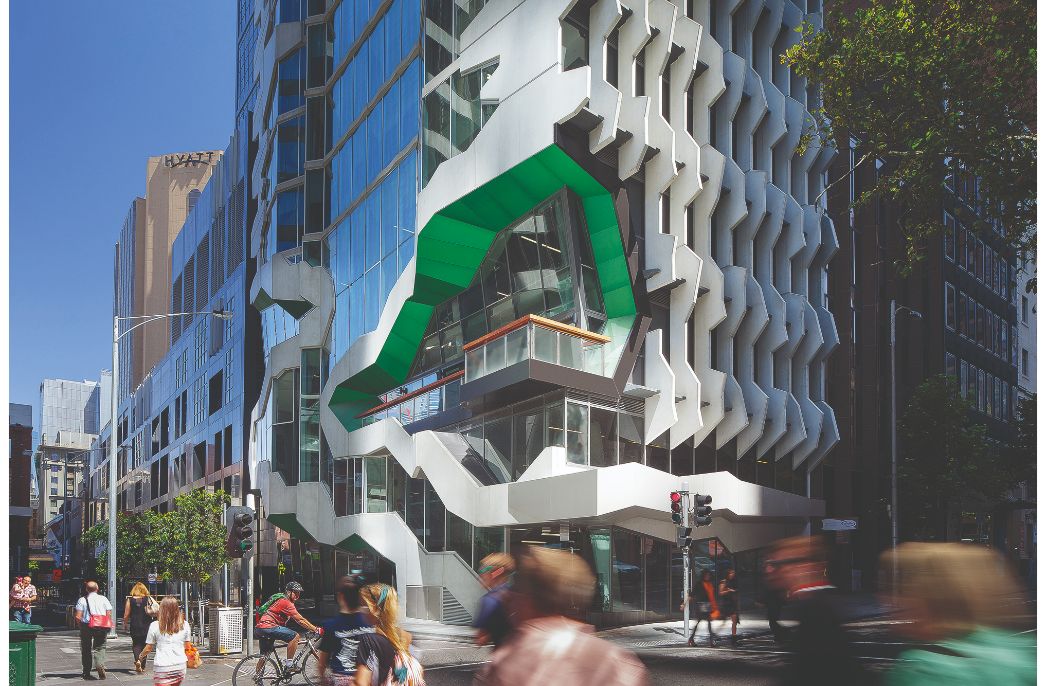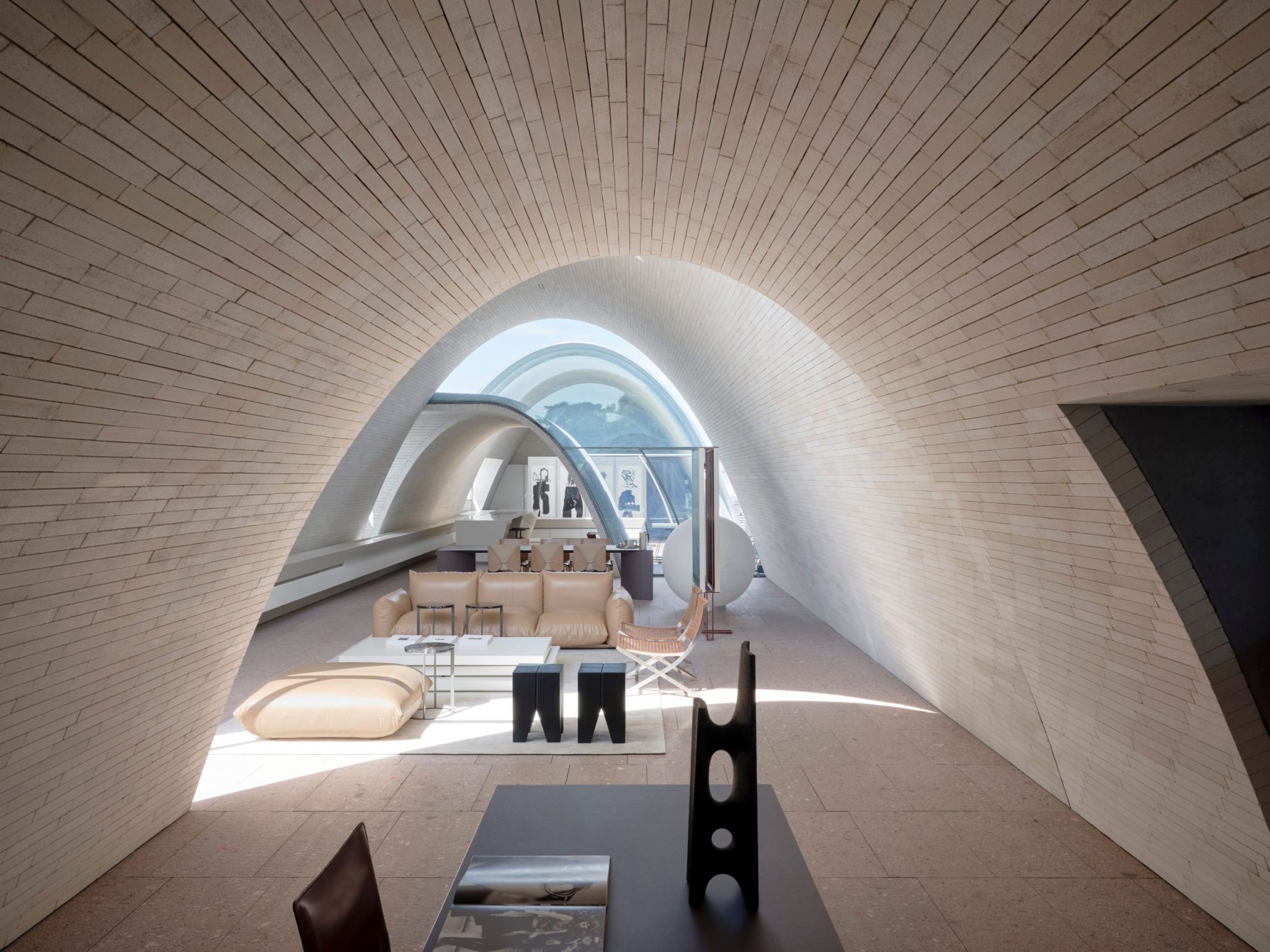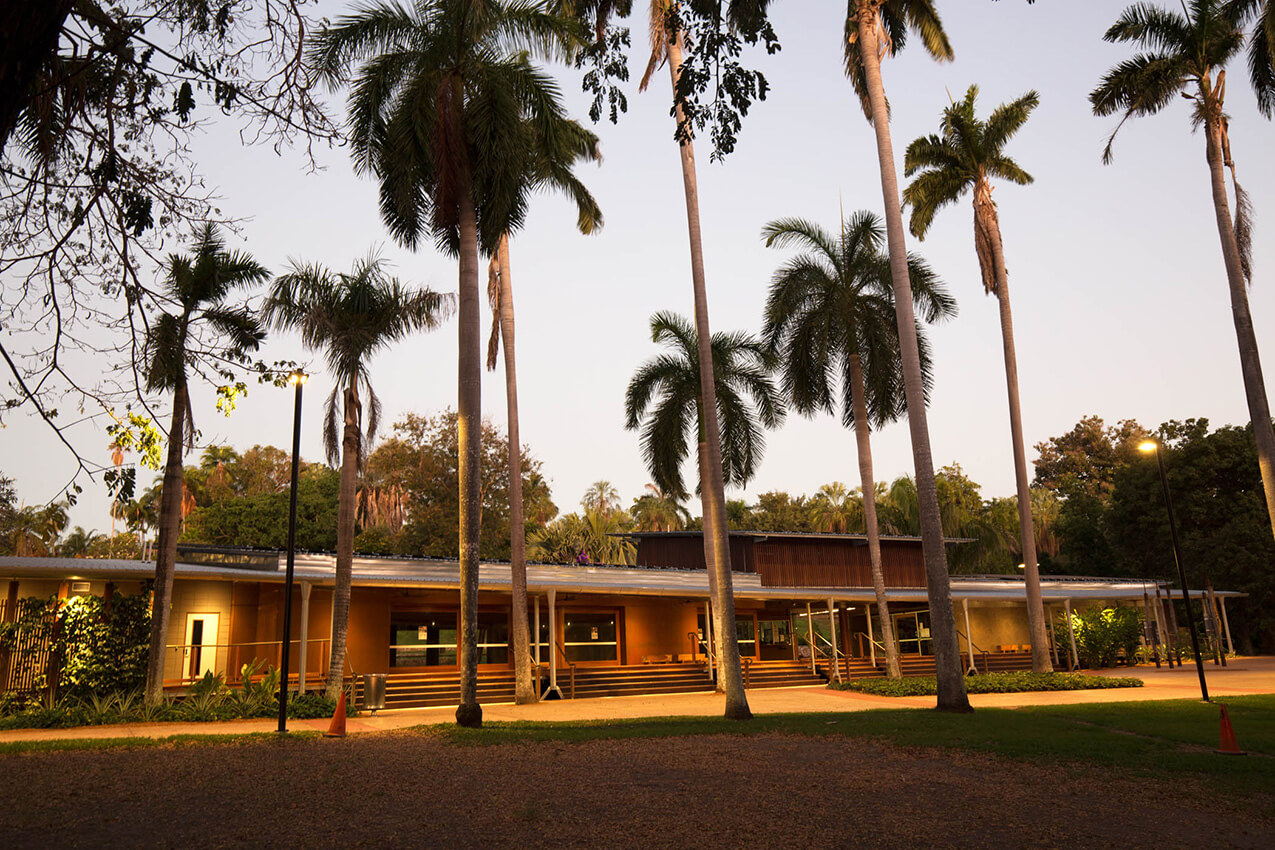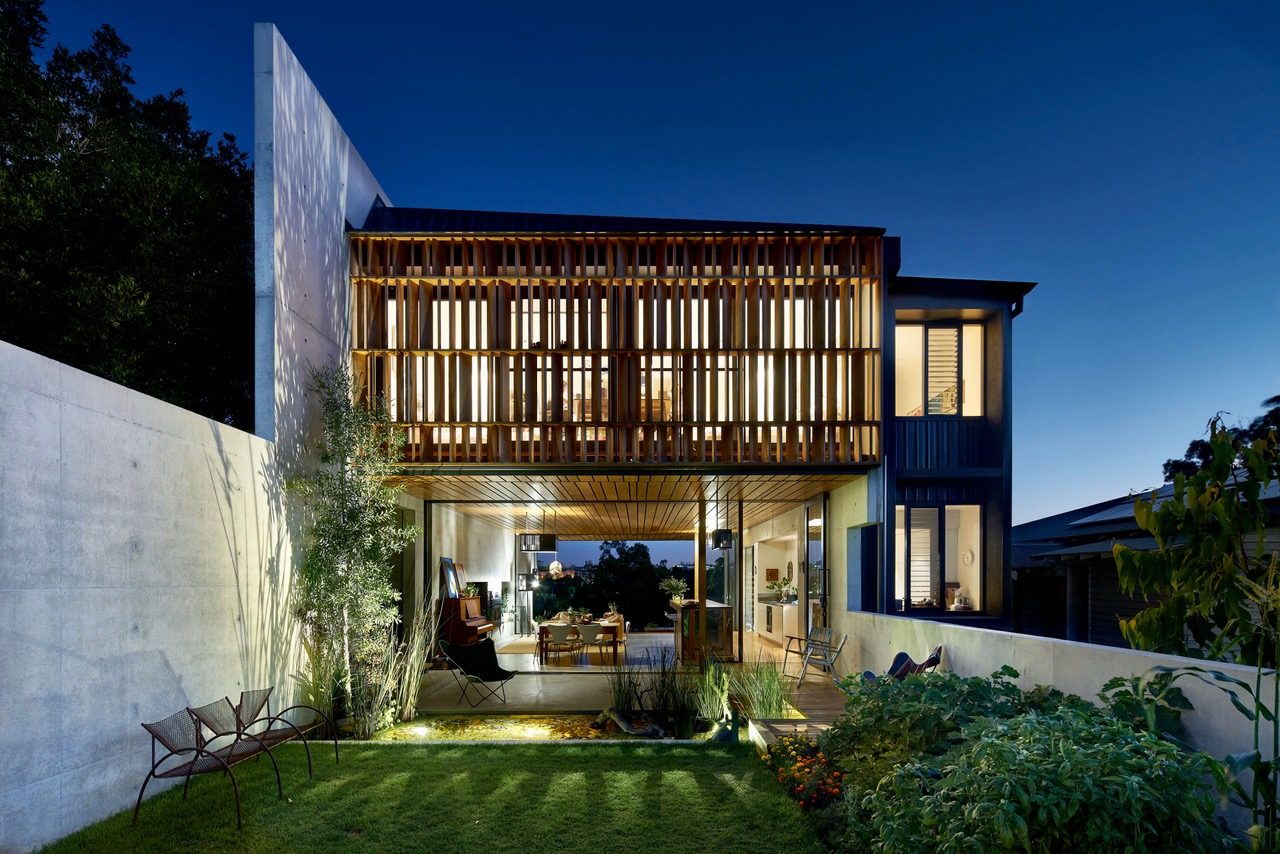
AIA Risk conference wrap-up
Share
Above image: Cynthia Davidson, Deborah Saunt, Andrew Mackenzie and Ian McDougall at the Culture discussion. All images appear courtesy of the Australian Institute of Architects.
Dr Helen Norrie, one of the creative directors of the 2014 Australian Institute of Architects National Conference, reviews the 2015 event.
As one of the Creative Directors of the 2014 Australian Institute of Architects National Conference in Perth, it was a great delight to be in the audience of this year’s conference, with the knowledge of the complexity that the event entails. The model of appointing curator for the major event in the Institute’s calendar is now in its eleventh year. For the 2015 conference, Donald Bates, Hamish Lyon and Andrew Mackenzie took their theme of RISK seriously by trialling a new format that deviated from the traditional model of predominantly visual presentations, with very minimal discussion. They opted to dedicate two of the four sessions each day to ’talking not just at each other, but to each other’, examining ‘The Changing Role of Risk in Architecture’ in different ways.
The gamble to set up discussion panels paid off very well, with an interesting range of discussions expertly curated and hosted. International guests were cast as facilitators, and it was particularly impressive to see how much time and research each did in preparation for these sessions. Selecting and inviting speakers requires a leap of faith that they will engage with particular ideas, rather merely marketing their practice to a captive audience. Each of the speakers honoured this request, contributing to a range of discussion with both considered seriousness and delightful humour.
The discussion sessions were run in parallel streams, which can itself be risky as it can leave people wondering whether or not they should have chosen the other session. It’s a measure of the excellence of the programme that this was not the case, with each session offering interesting insights into the idea of ‘risk’ in varying ways. Two different models were employed. “Panel Discussions” allowed for debate of broad topics, and series of “Dialogue” sessions highlighted the work of Australian practices through short and focussed presentations of their own work, which formed the catalyst for the following discussion that was chaired by international guests. This allowed for the inclusion of more voices and created a commentary between Australian and international practices, which resulted in lively, amusing and rich conversations. Panellists showed selected work, which extended the parameters of the ‘risk’ discussion. Of particular note was Camilla Bock’s observation of the relationship between risk and trust.
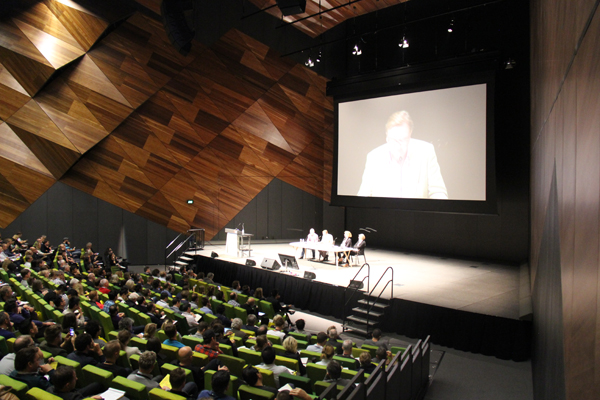
The Culture panel discussion with Deborah Saunt, Cynthia Davidson, Ian McDougall and Andrew Mackenzie
Both days of the conference were book ended with talks presenting the work of international practitioners. This gave everyone a chance to wind into and out of the day’s discussions, with images providing visual stimulation as a counterpoint to the intense conversations. Greg Pasquerilli of SHoP architects in New York provided an inspiring start, with an impressive range of projects that demonstrated the practice’s belief that the architects’ sphere of design is not limited to buildings. Projects included the design of computer programmes to process planning regulations and iPhone apps to assist with construction processes. ShoP’s work is ambitious on so many levels, and it demonstrates the broadest application of design thinking to the construction industry. The scale of projects, which are at the forefront of development in New York, are awe inspiring but also gave me heart palpitations. Looking beyond the fantastic forms and structural feats, it is quite alarming to consider the risk that these developments will erode and overwrite the urban grain and scale, and irreversibly alter the economic and social balance of the city.
Pasquerilli is a hard act to follow, and it was a surprise to see that after two decades of international success of her practice, UN Studio, that Caroline Bos was not as adept at public speaking as we had all anticipated. However, her sharp intelligence was demonstrated in the more intimate setting of the panel discussions. Deborah Saunt was also a fantastic contributor to panel discussions, generously agreeing to participate in three sessions as well as presenting the work of her London-based practice, DSDHA, which she founded with David Hills. DSDHA’s work is highly nuanced at both the strategic and detailed level, and spans scales from domestic to civic. The projects presented reinforced Staunt’s comments in the panel discussion that architects ‘hold the key to value’, and that they should value their role as a ‘public agent.’ It will be fantastic to see how the richness and simple complexity that is central to Staunt’s own ‘Covert House’, buried in a garden in inner London, translates to the firm’s latest project for the remodelling on Tottenham Court Road.
David Gianotten from OMA demonstrated perfectly how to weave the day-to-day business of practice into a broader narrative, with a series of fascinating maps and charts that illustrated different aspects of risk. In contrast, Kasper Jensen of Danish firm 3XN showcased a portfolio of work in a more traditional manner, the most interesting and potentially risky of which were the experiments of the practice’s ecological research division, GXN, that explore digital processes and innovative material solutions.
Like Gianotten, Jeremy Till also forensically investigated the processes underpinning the architectural practice and building procurement, while cleverly plugging each of his excellent books by re-titling each publication as a way of drawing a précis of his broad-ranging work into the conversation. The inclusion of Till in the programme allowed for the position of the critical theorist into the discussion of practice, highlighting the value of his work to a broader audience. Similarly, ideas and projects by Cynthia Davidson, from the ANY series in the 1990s to her current publication, Log: Observations on Architecture and the Contemporary City, highlighted the value of interweaving critical theory with practice. In particular reference to Log volume 31, “New Ancients”, which focuses on transformation and copying in young practice, provided food for thought for ongoing discussion.
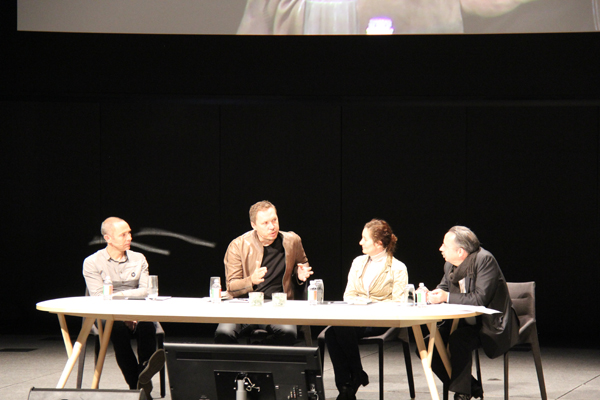
The greatest reward was offered to those who made their way in early on Saturday morning, hangovers notwithstanding, to see Amanda Levete’s fantastic presentation. Although she was not able to attend the conference, Levete generously yielded to the Creative Directors’ ongoing plea to participate by making a beautiful film, with a precise and articulate script that described the development of a career that has never shied away from risk, from the early days of Future Systems to current work in her practice AL_A. The body of work is as nuanced as it is ambitious, which was illustrated perfectly in the proposal for new additions to the Victoria and Albert Museum in London, which is quite subtly breathtaking. The proposition of unpicking of a heritage-listed screen to provide new access to the museum via a porcelain courtyard perfectly embodies both the spirit of the original museum, which was founded in the wake of the 1851 World Expo, and twenty-first century concerns for urbanism with digital and material experimentation.
The programme provided a balance between presentations and discussions across the two days, although the latter required more intense engagement. Presentations with images allow more mental space to drift in and out of the conversation, and to think in parallel about the ideas presented, whereas the discussions required complete concentration, which both was extremely interesting and a little exhausting. However, the format seeded lots of fantastic conversation, and generated a positive energy amongst the masses. Speaking to other delegates revealed that the audience was both engaged and stimulated by the conversations, and were not disappointed by the reduced number of visual presentations that this allowed. I wondered if the conversations were striking a cord more with practice directors and principles, and if many of the higher order issues that were being discussed were of less interest to younger members of the profession. However, discussions with the recent graduates and students indicated the opposite, perhaps because they were actually enjoying exposure to conversations that may not be central to their day-to-day practice experience. It would be great if the Institute would make recordings of the sessions available to delegates, so that they can engage with the sessions that missed. This would allow for the discussions to continue beyond the conference, into offices and the everyday conversations of practice.
One of the challenges for the Creative Directors is orchestrating the flow of the conference, designing the structure of the programme to create a balance between providing rich and varied content in just two days, and the logistics of 1500 people getting a morning tea, lunch and smoko – and having time to chat and meet up new and old friends. Allowing time for the an annual reunion of an ever-growing extended ‘family’ of friends and colleagues is a central aspect of the conference, which increasingly serves as an informal Insta-meet, where ‘old’ friends from the virtual world of Twitter and Instagram meet in person for the first time. With this in mind, prefacing the conference with a Q&A session on Thursday evening was a tough call. Although this provided a very well curated and interesting discussion, the unwitting sandwiching of this session between the Parlour soiree and the opening cocktail party meant that everyone was slightly distracted and wishing for their next (or first) glass of champagne. However, if the only criticism that can be levelled at this excellently conceived, curated and executed conference is that we were asked to work hard and engage fully in serious conversations about the profession now and in the future, that’s not really a bad thing. Congratulations to Donald, Hamish, Andrew and the whole team at the Institute for another great year, and we look forward to 2016 when we contemplate “How Soon is Now.”

